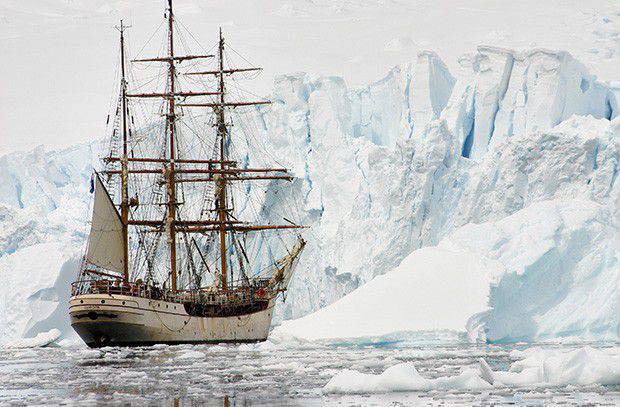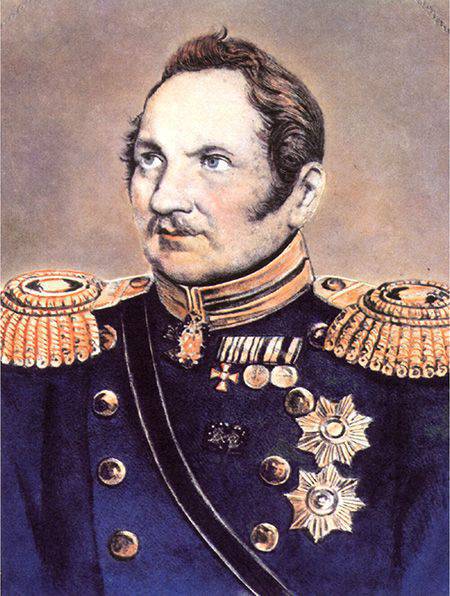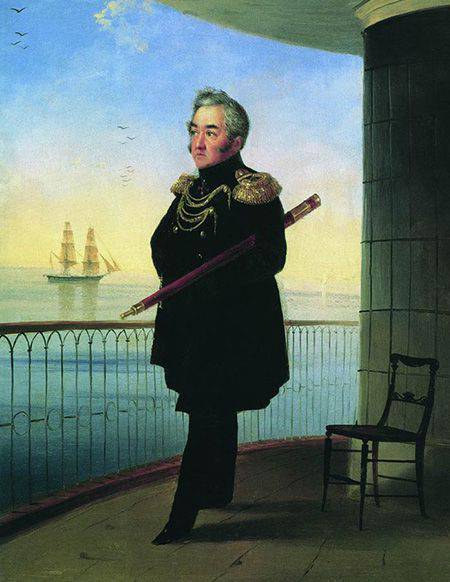How Russian sailors discovered Antarctica

The sixth continent was discovered out of pure curiosity.
The existence of Antarctica was predicted long before its actual discovery - though not scientifically (it was impossible), but mythologically: just as Jonathan Swift in his “Gulliver's Travels” predicted the existence of two satellites of Mars, which until now cannot be seen in any telescope. First, in the 16 century, the Portuguese expedition Amerigo Vespucci assumed the existence of a whole continent in the extreme south of the Earth. And two centuries later, James Cook wrote: "The great cold, a huge number of ice islands and floating ice - all this proves that the land in the south should be ...". Before the outlines of Australia and Tierra del Fuego were fully mapped, some travelers assumed that there was a huge supercontinent in the Southern Hemisphere, including Australia and South America. But who actually discovered Antarctica?
This honor belongs to Russian sailors - for January 28 1820, the sloops Vostok and Mirny first came to the coast of Antarctica covered with a thick layer of ice. The expedition was led by Thaddey Bellingshausen and Mikhail Lazarev.

Despite the difference in biographies, both great sailors had a lot in common - for example, from childhood, as they say, “they were sick of the sea”. Bellingshausen came from Baltic Germans, he spent his childhood in Kronstadt, where from 10 he studied at the Naval Cadet Corps. Lazarev, who came from a family of a brilliant nobleman and a very enlightened man, Senator Peter Gavrilovich Lazarev, also entered here. In 1803 – 1806, Bellingshausen took part in the first voyage around the world — he was on the Nadezhda ship. The voyage was not easy, including because of the sharp conflict between the nominal expedition leader Nikolai Rezanov (well known to our contemporary thanks to the rock opera “Juno and Avos”) and the actual leader, Ivan Krusenstern. At this time, Lazarev studied the marine business on British ships - he spent about 5 years in almost non-stop voyages across the Atlantic and the Mediterranean. Both navigators took part in the wars with foreign powers.
Expedition Preparation
Bellingsgauzen himself admitted in his diary: “It is difficult to say who originated the first thought about this expedition and who was the initiator. It is possible that this idea was born almost simultaneously by several of the most prominent and enlightened Russian navigators of the time - Golovnin, Kruzenshtern and Kotzebue. ” However, it was Krusenstern who took the practical step towards preparing the expedition to Antarctica. In 1819, he sent a letter to Naval Minister de Traversay, where he justified the need for an expedition to the South Pole. There was little practical sense. For Russia, all attempts to gain influence in the southern hemisphere throughout the 19 century remained adventures - this was shown, in particular, by the example of Miklouho-Maclay, who proposed to the empire to establish a protectorate over the Coast opened to them. However, the expedition had a huge scientific interest. The Ministry of the Navy approved the project and prepared two ships, choosing them as captains of experienced sailors: for the first time, Bellingsgausen and Lazarev were together in the same voyage. The sloop "Vostok" was commanded by Bellingshausen, the sloop "Mirny" - Lazarev.
The expedition began with a study of South Georgia and Sandwich Land - in the course of these studies, discoveries were made that significantly changed geographic maps. It was found that Sandwich Land is not an island, but an archipelago that was renamed the South Sandwich Islands. The expedition was to "continue its exploration to the remote breadth that can be reached." Soon, the views of the desert islands were replaced by pictures of dead ice: moving from west to east, the ships crossed the Arctic Circle and came close to the ice barrier of Antarctica. This day - January 28 1820 of the year - entered history as the discovery date of the Antarctic mainland. Two more times (February 2 and 17) the ships managed to get close to the shores of the mysterious continent. It is curious that the point from which the Russians first observed the new continent, man had a chance to visit again only a hundred years later - the Norwegian researchers called it the Coast of Princess Martha.

The weather during the expedition was disgusting. “Although in the deck where the officers and ministers lived, they used to heat the stoves daily and wipe the ceiling three times a day (on which drops were made), the damp dress was dried at the top whenever possible, but continuous thick fogs, sleet and slush brought us to that we felt the perfect need for good weather, ”wrote Bellingshausen. Because of the fog, the sailors of the Vostok, in fact, did not manage to see much - only solid fields of ice hummocks around. “Peaceful” was lucky much more - Lazarev saw “experienced ice of extraordinary height,” which stretched “as far as vision could reach” —that is, the captain was already observing the ice sheet of Antarctica itself, and not the surrounding ice.
Antarctica, hello and goodbye
Due to the approaching winter (which occurs in the southern hemisphere in May-June), the ships left the coastal zone of Antarctica and waited for the season in temperate latitudes, and then again went to the coast of the mainland. January 22, 1821 their ships discovered a large island located next to the mainland. “I called this island the high name of the culprit of the existence of the military in the Russian Empire fleet “The island of Peter I,” writes Bellingshausen. However, it was not possible to land on the island: "On the continuous ice surrounding the island, not foreseeing the possibility of coming close to the shore to send a rowing vessel, I laid, without wasting time, go further east and in parallel with the ice." In total, the sailing of Russian ships lasted a little more than 2 years - 751 days, and its length was about 100 thousand kilometers - more than 2 times the Earth's equator. Ships crossing the Arctic Circle three times discovered not only the mainland itself, but also 29 large islands on which the human foot has never set foot.
Both pioneers of Antarctica lived a long and glorious life. Bellingshausen commanded battles during the Russian-Turkish war of 1828 – 1829. Lazarev caught up and overtook a colleague in the number of world travels - not one, but three times circled the Earth in seas and oceans. Around 20 years commanded the Black Sea Fleet. Among his students were outstanding naval commanders Vladimir Kornilov, Pavel Nakhimov, Vladimir Istomin.
The Russians did not open Antarctica in order to forget about it: in honor of the ships that first reached the shores of the mainland, the first Soviet stations opened here - Vostok and Mirny were later named. And the first Soviet polar station, founded near the west coast of Antarctica, was named in honor of Bellingshausen - just like a large sea off the coast of the mainland. However, the name of the Russian traveler was immortalized not only in the toponymy of the open continent: the islands in the Pacific and Atlantic Ocean and even an island in the Aral Sea carry it. The name Lazarev is called the sea located near the Atlantic coast of the continent, as well as the mountain range.
Information